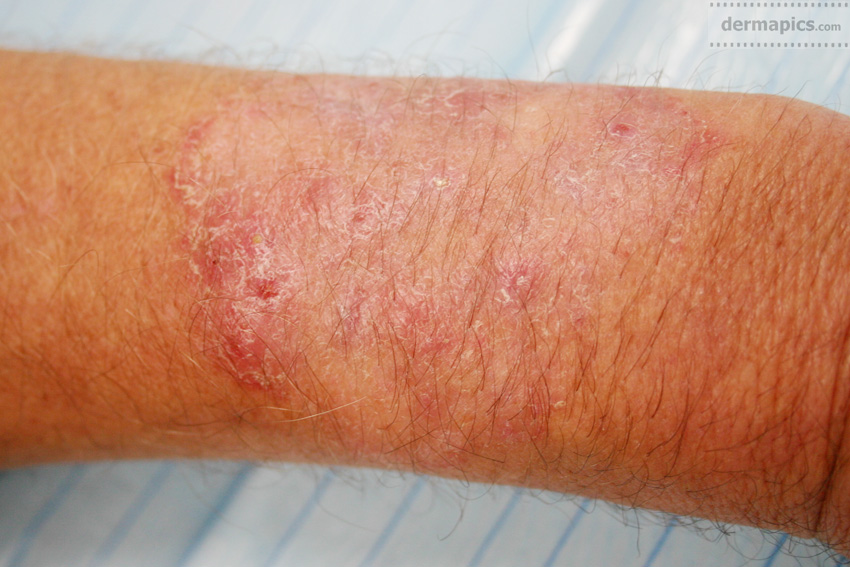Ringworm
(fungal infection of the skin)

dermapics.com
...
illustrating
dermatology
 |
What
is
ringworm? Ringworm is a type of fungal infection (tinea) that is caused by dermatophytes. Tinea infections are commonly called ringworm because some infections form a ring-like pattern on affected areas of the body. There are three families ('genera') of dermatophytes: trichophyton, microsporum and epidermophyton. Some dermatophytes are well adapted to living on human skin, others are mainly found on animal skin. When these zoophilic fungi invade human skin they tend to provoke a more serious inflammation than fungi that have a preference for human skin. Symptoms of ringworm Infection with dermatophytes often give rise to slowly spreading annular skin lesions. Severe itch is almost always present. Typically, a slightly raised border can be seen with scaling. Sometimes a pustular reaction can occur. Diagnosis of ringworm A dermatophyte infection is confirmed by microscopy and culture of skin scrapings. Treatment Most infections can be treated with topical creams containing anti fungal agents. More extensive or long-standing infections may require treatment with oral antifungal pills. |
||
 |
|||
|
|||
 |
 |
||
|
|
|||
| a-z index disclaimer |
©
dermapics.com
|
||
